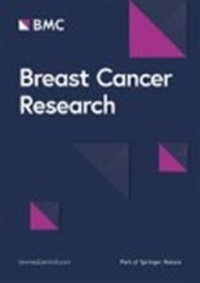Metabolomics assisted by transcriptomics analysis to reveal metabolic characteristics and potential biomarkers associated with treatment response of neoadjuvant therapy with TCbHP regimen in HER2 + breast cancer
IF 6.1
1区 医学
Q1 ONCOLOGY
引用次数: 0
Abstract
This study aimed to explore potential indicators associated with the neoadjuvant efficacy of TCbHP regimen (taxane, carboplatin, trastuzumab, and pertuzumab) in HER2 + breast cancer (BrCa) patients. A total of 120 plasma samples from 40 patients with HER2 + BrCa were prospectively collected at three treatment times of neoadjuvant therapy (NAT) with TCbHP regimen. Serum metabolites were analyzed based on LC-MS and GC-MS data. Random forest was used to establish predictive models based on pre-therapeutic differentially expressed metabolites. Time series analysis was used to obtain potential monitors for treatment response. Transcriptome analysis was performed in nine available pre‑therapeutic specimens of core needle biopsies. Integrated analyses of metabolomics and transcriptomics were also performed in these nine patients. qRT-PCR was used to detect altered genes in trastuzumab-sensitive and trastuzumab-resistant cell lines. Twenty-one patients achieved pCR, and 19 patients achieved non-pCR. There were significant differences in plasma metabolic profiles before and during treatment. A total of 100 differential metabolites were identified between pCR patients and non-pCR patients at baseline; these metabolites were markedly enriched in 40 metabolic pathways. The area under the curve (AUC) values for discriminating the pCR and non-PCR groups from the NAT of the single potential metabolite [sophorose, N-(2-acetamido) iminodiacetic acid, taurine and 6-hydroxy-2-aminohexanoic acid] or combined panel of these metabolites were greater than 0.910. Eighteen metabolites exhibited potential for monitoring efficacy. Several validated genes might be associated with trastuzumab resistance. Thirty-nine altered pathways were found to be abnormally expressed at both the transcriptional and metabolic levels. Serum-metabolomics could be used as a powerful tool for exploring informative biomarkers for predicting or monitoring treatment efficacy. Metabolomics integrated with transcriptomics analysis could assist in obtaining new insights into biochemical pathophysiology and might facilitate the development of new treatment targets for insensitive patients.代谢组学辅助转录组学分析揭示与 HER2 + 乳腺癌 TCbHP 方案新辅助治疗反应相关的代谢特征和潜在生物标志物
本研究旨在探索与HER2+乳腺癌(BrCa)患者TCbHP方案(紫杉类药物、卡铂、曲妥珠单抗和百妥珠单抗)新辅助疗效相关的潜在指标。研究人员前瞻性地收集了40名HER2+乳腺癌患者在采用TCbHP方案进行新辅助治疗(NAT)的三个疗程中的120份血浆样本。根据 LC-MS 和 GC-MS 数据对血清代谢物进行了分析。随机森林用于建立基于治疗前差异表达代谢物的预测模型。时间序列分析用于获得治疗反应的潜在监测指标。对九份可用的治疗前核心针活检标本进行了转录组分析。还对这九名患者进行了代谢组学和转录组学的综合分析。采用 qRT-PCR 技术检测曲妥珠单抗敏感细胞系和曲妥珠单抗耐药细胞系中发生改变的基因。21名患者获得了pCR,19名患者未获得pCR。治疗前和治疗期间的血浆代谢谱存在明显差异。在基线时,pCR 患者和非 CR 患者之间共发现了 100 种不同的代谢物;这些代谢物在 40 种代谢途径中明显富集。从单一潜在代谢物[槐糖、N-(2-乙酰氨基)亚氨基二乙酸、牛磺酸和 6-羟基-2-氨基己酸]或这些代谢物的组合的 NAT 中区分 pCR 组和非 pCR 组的曲线下面积 (AUC) 值大于 0.910。18 种代谢物显示出监测疗效的潜力。一些经过验证的基因可能与曲妥珠单抗耐药性有关。39种改变的通路在转录和代谢水平上都有异常表达。血清代谢组学可作为一种强大的工具,用于探索预测或监测疗效的信息生物标志物。代谢组学与转录组学分析相结合,可以帮助人们对生化病理生理学有新的认识,并可能促进为不敏感患者开发新的治疗靶点。
本文章由计算机程序翻译,如有差异,请以英文原文为准。
求助全文
约1分钟内获得全文
求助全文
来源期刊

Breast Cancer Research
医学-肿瘤学
自引率
0.00%
发文量
76
期刊介绍:
Breast Cancer Research is an international, peer-reviewed online journal, publishing original research, reviews, editorials and reports. Open access research articles of exceptional interest are published in all areas of biology and medicine relevant to breast cancer, including normal mammary gland biology, with special emphasis on the genetic, biochemical, and cellular basis of breast cancer. In addition to basic research, the journal publishes preclinical, translational and clinical studies with a biological basis, including Phase I and Phase II trials.
 求助内容:
求助内容: 应助结果提醒方式:
应助结果提醒方式:


